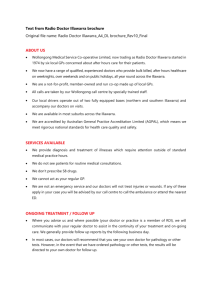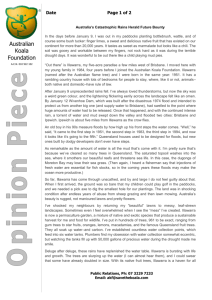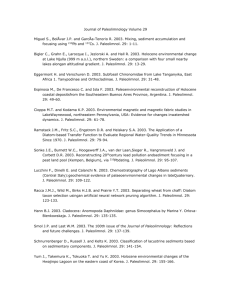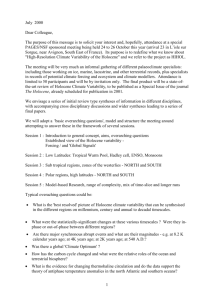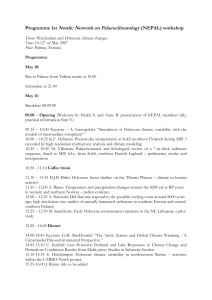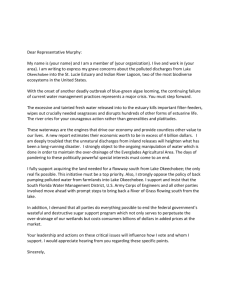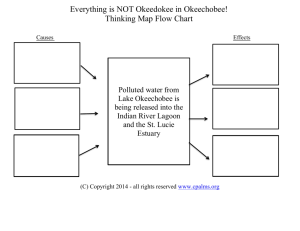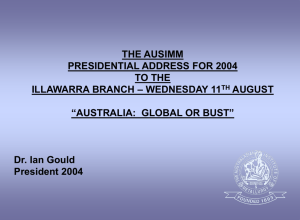HOLOCENE EVOLUTION OF A BARRIER ESTUARY,
advertisement
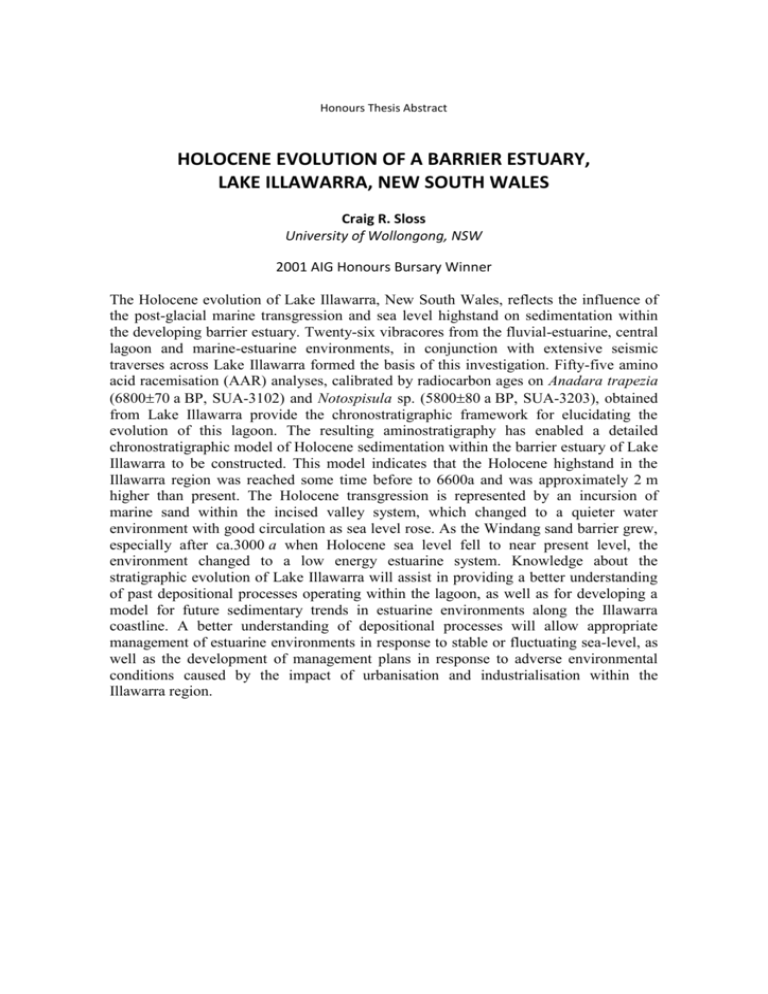
Honours Thesis Abstract HOLOCENE EVOLUTION OF A BARRIER ESTUARY, LAKE ILLAWARRA, NEW SOUTH WALES Craig R. Sloss University of Wollongong, NSW 2001 AIG Honours Bursary Winner The Holocene evolution of Lake Illawarra, New South Wales, reflects the influence of the post-glacial marine transgression and sea level highstand on sedimentation within the developing barrier estuary. Twenty-six vibracores from the fluvial-estuarine, central lagoon and marine-estuarine environments, in conjunction with extensive seismic traverses across Lake Illawarra formed the basis of this investigation. Fifty-five amino acid racemisation (AAR) analyses, calibrated by radiocarbon ages on Anadara trapezia (680070 a BP, SUA-3102) and Notospisula sp. (580080 a BP, SUA-3203), obtained from Lake Illawarra provide the chronostratigraphic framework for elucidating the evolution of this lagoon. The resulting aminostratigraphy has enabled a detailed chronostratigraphic model of Holocene sedimentation within the barrier estuary of Lake Illawarra to be constructed. This model indicates that the Holocene highstand in the Illawarra region was reached some time before to 6600a and was approximately 2 m higher than present. The Holocene transgression is represented by an incursion of marine sand within the incised valley system, which changed to a quieter water environment with good circulation as sea level rose. As the Windang sand barrier grew, especially after ca.3000 a when Holocene sea level fell to near present level, the environment changed to a low energy estuarine system. Knowledge about the stratigraphic evolution of Lake Illawarra will assist in providing a better understanding of past depositional processes operating within the lagoon, as well as for developing a model for future sedimentary trends in estuarine environments along the Illawarra coastline. A better understanding of depositional processes will allow appropriate management of estuarine environments in response to stable or fluctuating sea-level, as well as the development of management plans in response to adverse environmental conditions caused by the impact of urbanisation and industrialisation within the Illawarra region.

